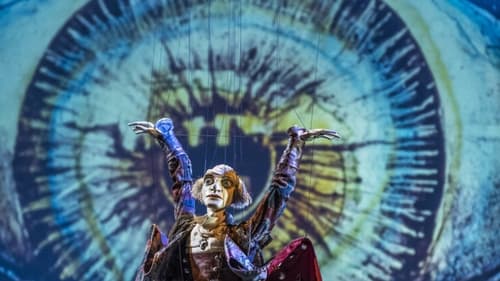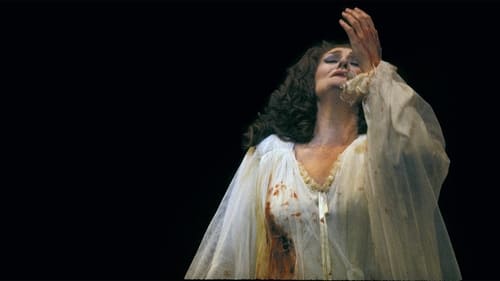
Marjorie grew up in Winchelsea in country Victoria, Australia, dreaming of becoming an opera star like Dame Nellie Melba. In 1928 she went to Paris to study opera without knowing a word of French and having never heard of Richard Wagner. In 1941, at the height her success, she was tragically cut down by polio and became completely paralysed. With the help of Australian nurse, Sister Kenny, Marjorie regained movement in her upper body and resumed her career in a wheelchair. In 1955, MGM made a movie of her life, "Interrupted Melody", starring Eleanor Parker and Glenn Ford, which won an Academy Award.

Conductor
In Luther's beer-cellar, lusty singing extols the virtues of beer and wine. For this evening, the Muse decides to deflect the poet Hoffmann's attention from amorous escapades, so that he will devote himself entirely to his art. Hoffmann tells of the three unhappy loves of his life: Olympia, Antonia and Giulietta.

Conductor
After the Viennese premiere, the Fledermaus (the bat) conquered the world. It is one of the few operettas that are regularly performed at the major opera houses such as the Metropolitan Opera, the Scala Milan, the Vienna State Opera and the Royal Opera House Convent Garden in London. John Cox directed this lavishly equipped production by Julia Trevelyan Oman initially in London in 1977. On New Year's Eve 1990, this staging offered the luxurious ambiance for the farewell to Joan Sutherland from her London audience. The singer had admired them since her first great success at this prestigious opera house in the fifties. The rushing feast in the second act reached its climax with its stormy cheered performance and the commitment of her friends and colleagues Luciano Pavarotti and Marilyn Horne, with whom she often stood together on the stage.

Conductor
After the Viennese premiere, the Fledermaus (the bat) conquered the world. It is one of the few operettas that are regularly performed at the major opera houses such as the Metropolitan Opera, the Scala Milan, the Vienna State Opera and the Royal Opera House Convent Garden in London. John Cox directed this lavishly equipped production by Julia Trevelyan Oman initially in London in 1977. On New Year's Eve 1990, this staging offered the luxurious ambiance for the farewell to Joan Sutherland from her London audience. The singer had admired them since her first great success at this prestigious opera house in the fifties. The rushing feast in the second act reached its climax with its stormy cheered performance and the commitment of her friends and colleagues Luciano Pavarotti and Marilyn Horne, with whom she often stood together on the stage.

Conductor
Joan Sutherland's farewell performance to the operatic stage offsets this story of the St. Bartholomew's Day massacre and the magnificence of 16th century France.

Conductor
Opera greats Luciano Pavarotti and Joan Sutherland -- one of the most acclaimed tenors and one of the most beloved sopranos of the 20th century -- take the stage at the Met for a gala evening of opera scenes with special guest Leo Nucci. Filmed in 1987, the memorable program includes scenes from the first and third acts of Donizetti's "Lucia di Lammermoor," the third act of Verdi's "La Traviata" and the third act of Verdi's "Rigoletto."

Conductor
Turn of the century Paris provides the glittering setting for this light hearted tale of political and amorous intrigue amidst the gaiety of Parisian high society.. First performed in Vienna in 1905 and here performed in the English version by Christopher Hassal.

Conductor
Australian Opera Chorus and Elizabethan Sydney Orchestra production of Donizetti's opera

King Henry VIII (Enrico VIII) of 16th century England falls in love with his queen's lady-in-waiting, Jane Seymour (Giovanna Seymour). The queen, Anne Boleyn (Anna Bolena) has a former lover, Lord Percy, whom Heny recalls from exile in order to tempt the queen into a compromising situation. When Anne rebuffs Lord Percy because she is married, Percy threatens to kill himself. However, Henry rushes into the room with an entourage and claims the couple has betrayed him. Henry sends Percy and Anne to jail and eventually to their death.

Conductor
King Henry VIII (Enrico VIII) of 16th century England falls in love with his queen's lady-in-waiting, Jane Seymour (Giovanna Seymour). The queen, Anne Boleyn (Anna Bolena) has a former lover, Lord Percy, whom Heny recalls from exile in order to tempt the queen into a compromising situation. When Anne rebuffs Lord Percy because she is married, Percy threatens to kill himself. However, Henry rushes into the room with an entourage and claims the couple has betrayed him. Henry sends Percy and Anne to jail and eventually to their death.

This telecast offers a rare opportunity to see the legendary Joan Sutherland in the role that first catapulted her to international stardom. She drove audiences wild by the way her opulent voice caressed the music’s long phrases and sprinted effortlessly through the fiendish runs, trills, embellishments and stratospheric high notes. One of the glories of the operatic world, her portrayal of Donizetti’s hapless heroine is a multifaceted and moving characterization. The incomparable tenor Alfredo Kraus is Edgardo, the man Lucia loves but cannot have. (Performance taped November 13, 1982. Broadcasted September 28, 1983.)

Conductor
This telecast offers a rare opportunity to see the legendary Joan Sutherland in the role that first catapulted her to international stardom. She drove audiences wild by the way her opulent voice caressed the music’s long phrases and sprinted effortlessly through the fiendish runs, trills, embellishments and stratospheric high notes. One of the glories of the operatic world, her portrayal of Donizetti’s hapless heroine is a multifaceted and moving characterization. The incomparable tenor Alfredo Kraus is Edgardo, the man Lucia loves but cannot have. (Performance taped November 13, 1982. Broadcasted September 28, 1983.)

Conductor
In celebration of its 100th anniversary in 1983, the Metropolitan Opera hosts a four-hour performance uniting some of the world's most spellbinding opera singers and conductors. The event includes a ballet from Samson et Dalila and boasts incredible classical performances from Kathleen Battle, Plácido Domingo, Jose Carerras, Leonard Bernstein, Marilyn Horne, Leona Mitchell, Luciano Pavarotti and many more.

Conductor
Norma by Vicenzo Bellini, perfomance from 1978 in the Sydney Opera House.

Conductor
Imbuing the familiar Don Juan myth with a captivating combination of comedy, seductiveness, danger, and damnation, Mozart created an enduring masterpiece that has been a cornerstone of the repertory since its 1787 premiere. An early entry in the Met’s series of PBS telecasts, this 1978 performance captures a young James Morris in a smooth portrayal of the title role, with the legendary Joan Sutherland showing off her unsurpassed technique as Donna Anna and Gabriel Bacquier as a masterful Leporello.

Director
Francis Poulenc's only full-length opera is firmly rooted in the post World War II era. Based on the historical events of the time of the French Revolution, this story of a community of Carmelite nuns who go to the guillotine rather than renounce their calling can be received in many ways. Poulenc's warmly melodic and lyrical score is wholly dramatic and gripping, and Dame Joan Sutherland, recreating the role she sang at the opera's British premiere in 1958, sings the second prioress with commanding moderation. This production serves the inspiration of Poulenc in every important particular of style, economy and theatrical force. Richard Bonynge conducts the Elizabethan Sydney Orchestra. Sung in English.













